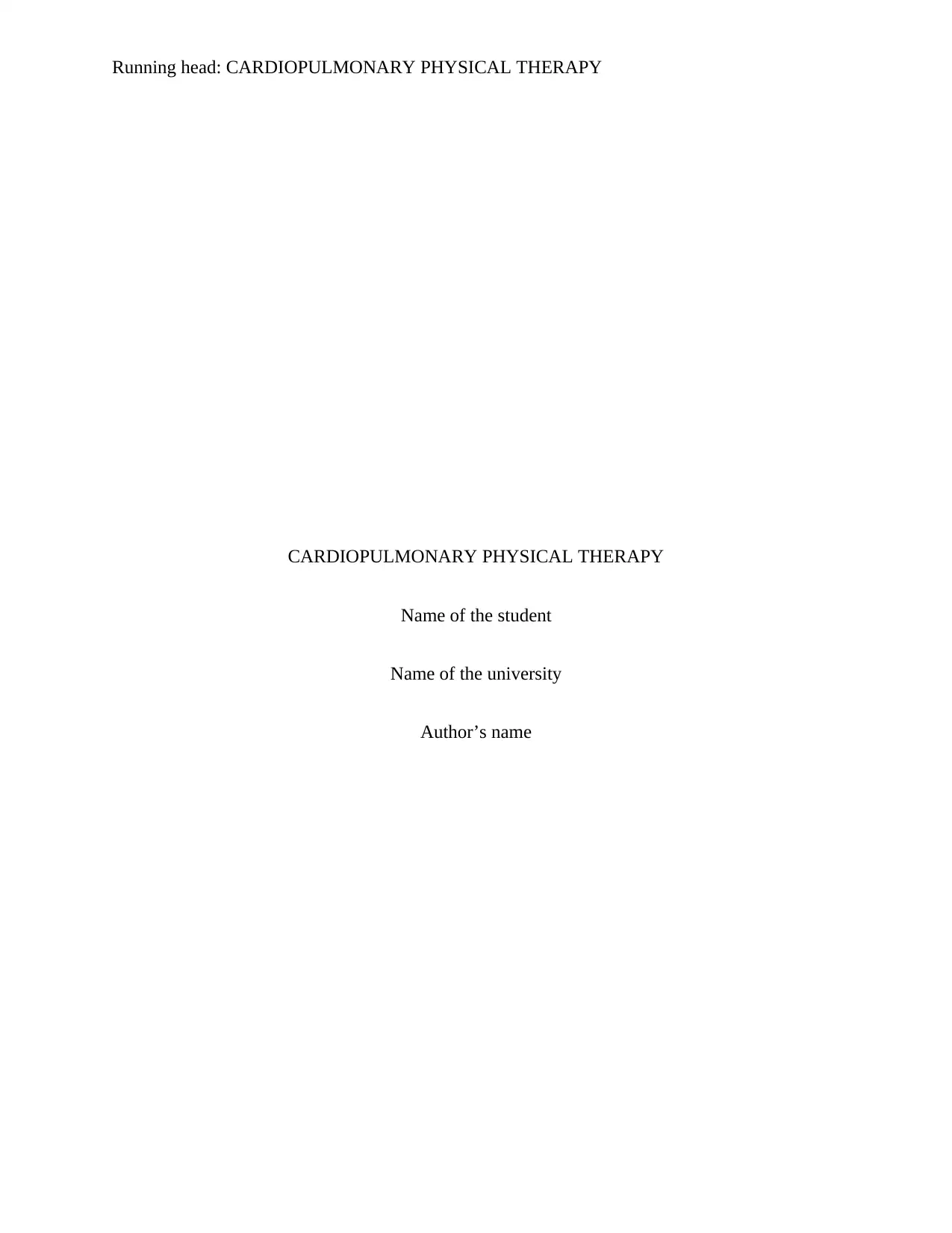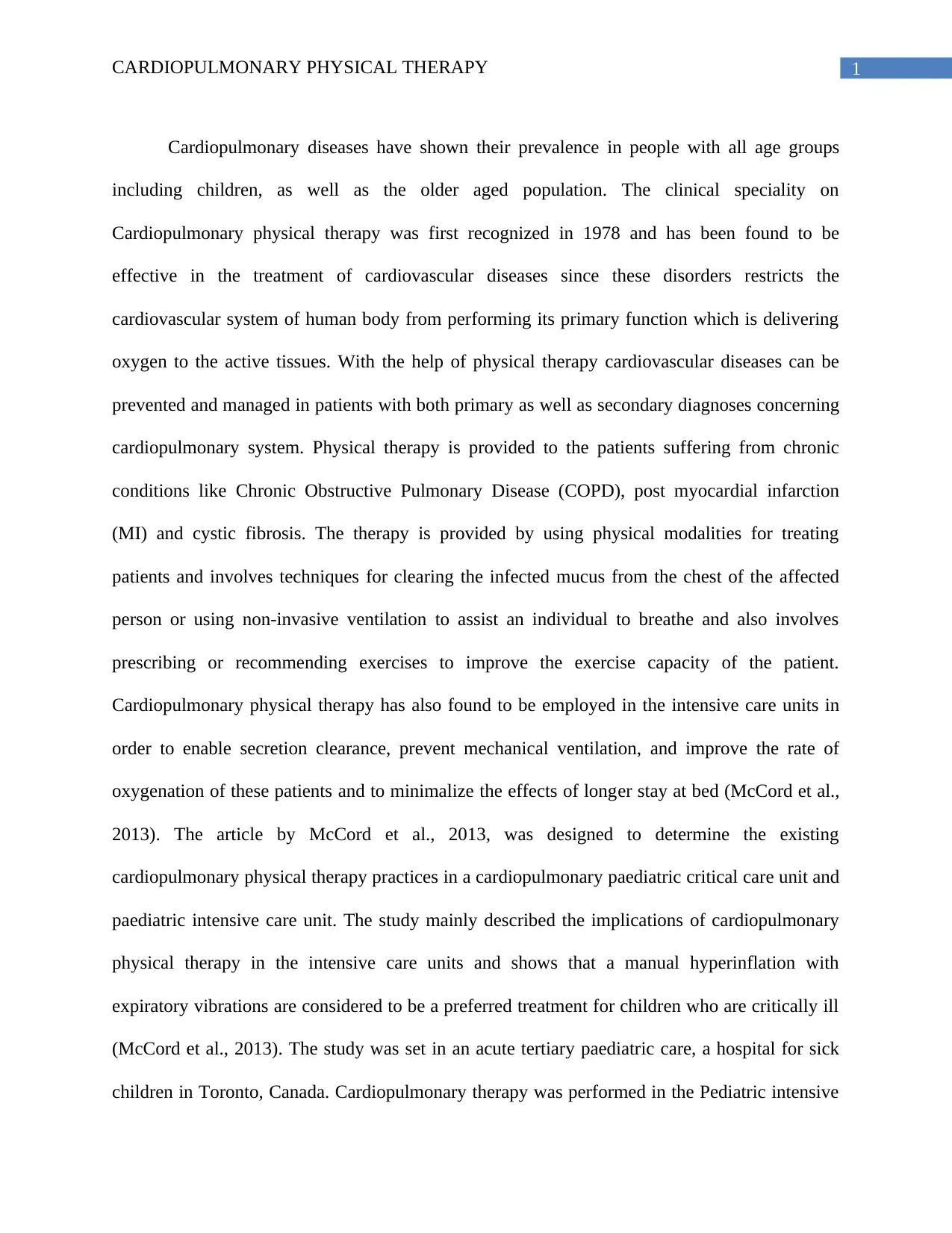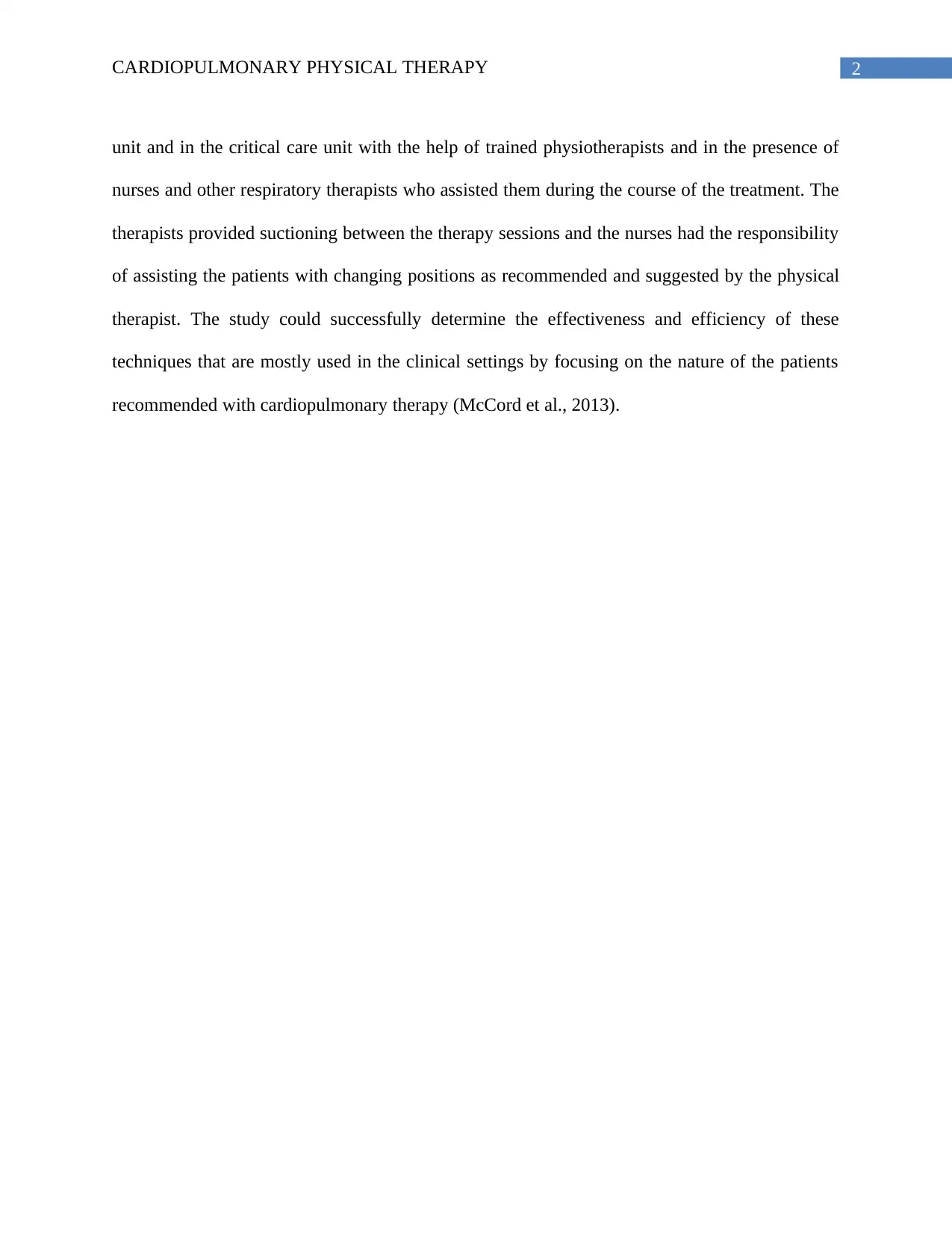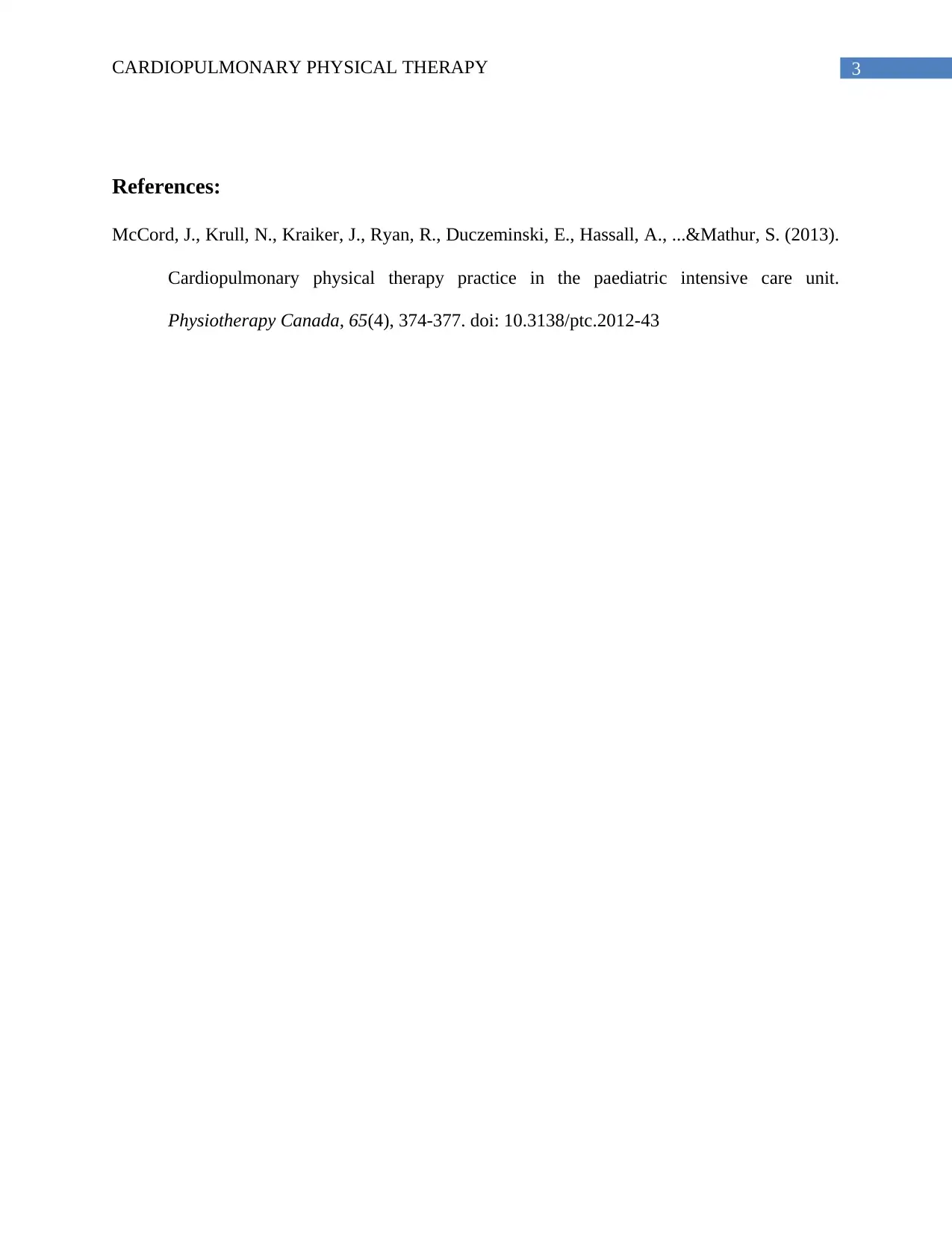University Name: Cardiopulmonary Physical Therapy Assignment Report
VerifiedAdded on 2022/11/14
|4
|525
|314
Report
AI Summary
This report examines cardiopulmonary physical therapy practices within pediatric intensive care units, focusing on the study by McCord et al. (2013). The report highlights the significance of physical therapy in managing cardiopulmonary diseases across various age groups, including children. It delves into the application of physical therapy in intensive care units to improve patient outcomes through techniques like manual hyperinflation and expiratory vibrations. The study's methodology, conducted at a hospital in Toronto, Canada, involving trained physiotherapists, nurses, and respiratory therapists, is also discussed. The report emphasizes the role of physical therapy in secretion clearance, preventing mechanical ventilation, and enhancing oxygenation, ultimately minimizing the adverse effects of prolonged bed rest. The analysis underscores the importance of clinically relevant studies in evaluating the effectiveness and efficiency of these techniques, especially given the variability in patient demographics and the complexity of implementing multiple cardiopulmonary techniques simultaneously.
1 out of 4











![[object Object]](/_next/static/media/star-bottom.7253800d.svg)